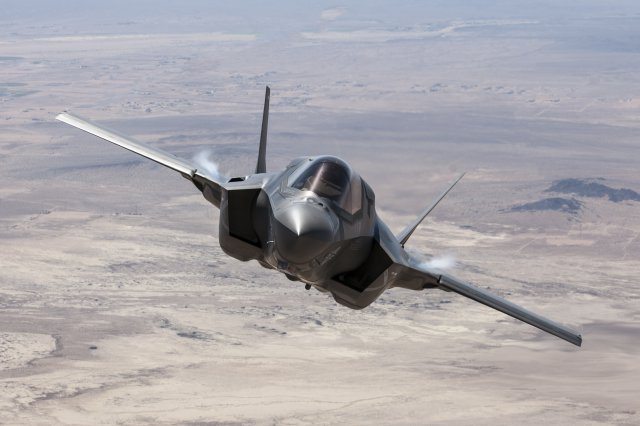The F-35 Joint Program Office has selected the U.S. Army Aviation and Missile Research Development and Engineering Center to perform independent software safety analyses of the next-generation strike aircraft commonly called the Joint Strike Fighter.
The single-engine, single-seat F-35 will be manufactured in three versions: a conventional-takeoff-and-landing variant for the Air Force, an aircraft-carrier variant for the Navy, and a short-takeoff/vertical landing variant for the Marine Corps and the U.K. Royal Air Force and Royal Navy.
The Software Airworthiness and Safety Lab, or SASL, which is a part of the Software Engineering Directorate at the Army Aviation and Missile Research Development and Engineering Center, or AMRDEC, will be responsible for performing an independent assessment of safety-critical software requirements, design and code that is embedded in the F-35 Aircraft operational flight program software. This highly integrated system is comprised of many parts including a propulsion system, weapons system and an autonomic logistics system.
“The F-35 has over 24 million lines of code and is clearly the most complex weapons system ever designed by the DOD,” explained James Lackey, AMRDEC’s Acting Director. “The department’s decision to select the Software Engineering Directorate to provide the independent software safety evaluation speaks highly of our expertise, credibility and our past demonstrated successes.”
The Software Engineering Directorate, or SED, provides system and software engineering life-cycle management support to the Army’s Aviation and Missile Command and numerous other customers. This includes software safety analysis and software airworthiness support for numerous aviation systems, such as the AH-64 Apache, UH-60 Black Hawk and CH-47 Chinook, and various weapon systems, including the Hellfire missile and Sentinel Radar.
Josh McNeil, SED’s Software Safety Lead, said that personnel in his group play a critical role on various software standards committees. He participated with multiple individuals across the various Services in creating, developing and revising the software safety sections for the Department of Defense Standard Practice for System Safety, Military Standard 882E.
“I was fortunate to be part of the committee that developed the software safety standards which were a significant part of revision E to MIL-STD-882E,” McNeil said. “We were able to identify and develop key requirements in this document on performing software safety analyses to ensure the software within a system is safe.”
SED has developed and documented a 12-step software safety process that meets all DOD and industry software system safety standards. From the initial system planning phase to the system’s final certification approval, these steps detail the necessary software safety activities and products. SED also has an extensive software safety training program that consists of several training courses and materials. They have provided numerous training classes to the National Aeronautics and Space Administration and Army Life Cycle Management Commands including Communications-Electronics Command, Tank and Automotive Command and Armaments Command.
“Software safety is an important discipline and it can be a challenge to grow a group this large, therefore I attribute our success to the hard work, dedication, knowledge and experience of the people on our team,” McNeil said. “Our SASL team is world-class and has been successful in providing this type of service to our AMCOM and external customers and we look forward to providing the Joint Program Office with the same world class level of support and high quality analyses and assessments.”
This is the Army’s first involvement in the JSF Program.
SASL’s experience in aviation and weapon system safety critical requirements, design and coding software life-cycle processes meets DoD and industry software airworthiness and safety requirements. Funding awarded from this task will employ five full-time subject matter experts to assist the SASL team in meeting the F-35 Joint Program Office requirements. SED will analyze the critical mission systems, pilot systems, and weapons systems software on the aircraft for hazard contributions and provide recommendations to address findings and fundamental safety design and code issues by using their specialized software safety processes and tools.










